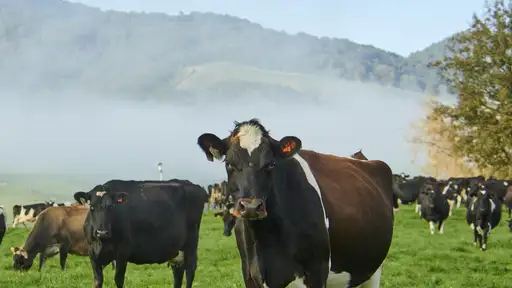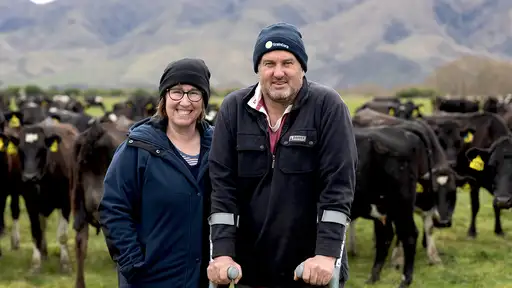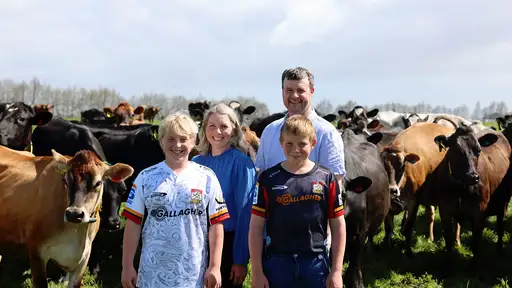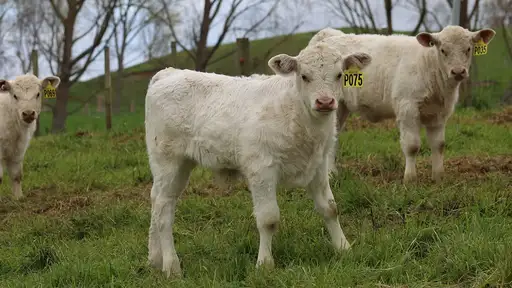Low beef cattle numbers in the United States have contributed to record high prices for 4-10 day old dairy beef calves - hitting as much as $1,000 USD for solid black beef x Holstein-Friesian bull calves. This has spurred investment, by both independent breeders and artificial breeding (AB) companies to breed more beef over dairy cows.
In the UK, increased use of sexed semen has enabled a higher uptake of beef genetics. In June last year, straw sales of beef genetics into dairy herds outstripped dairy for the first time, with beef now representing 52% of all semen sold to UK dairy farms.
These same trends are happening in New Zealand.
Cow wearables, such as cow collars and ear sensors, are being used more and more on New Zealand dairy farms to help monitor and manage animal performance, health and fertility. Mating plans are clearly evolving to take advantage of these technologies.
More beef straws are being used from day one of the AB season - a ‘Beef up front’ strategy. Lower BW cows are identified and inseminated with a valuable beef straw to improve the chances of selling calves for good prices early in the season. The most noticeable change has been a large uptick in Charolais straws used in the early season.
The continued increased use of beef since 2014, has many underlying drivers. Certainly, SGL Hereford has been an extremely popular and reliable option to produce a saleable dairy beef calf without sacrificing days in milk.
Any increase in the use of sexed semen to produce dairy replacements will open more opportunities during the AB period to use beef straws. Farmers have been drawn to beef straws to enable more saleable dairy beef calves in the first six weeks of AB.
The New Zealand beef sector itself has not been standing still. There is an accepted recognition that dairy beef can reduce greenhouse gas emissions per kg of carcass weight by one-third, compared with traditional cow-calf systems.
In the UK, the GameChanger beef programme is an innovative integrated value chain that delivers consistent, lower carbon dairy beef on Sainsburys’ supermarket shelves. All of the product supplied is dairy beef.
Some beef finishers who are early adopters of virtual fencing technologies such as Halter, have reported impressive results with a substantial increase in pasture utilisation and pasture quality improvements.2 This resulting in increased carcass weight per hectare, allowing more dairy beef cattle to be finished on pasture.
Several beef breeding programmes are becoming increasingly sophisticated and focused on supplying bulls for our annual LIC Genetics catalogue. These breeders are continually refining their selection criteria, investing in embryo transfer programmes, genomics and deploying economic selection indices focused on the dairy beef value chain profitability.
A few highlights that come to mind are Shrimpton’s Hill Herefords who were a pioneer in this area – with the development of their SGL Hereford breeding programme. Kakahu Charolais have taken their breeding programme to the next level, identifying Charolais for both calving ease, growth and carcass traits to a position that would have thought to be virtually impossible a few years ago. Rissington Cattle Company have also taken their breeding programme a step further with sires being evaluated for net feed conversion efficiency.
Today’s beef genetics for the New Zealand dairy market are a step change from as little as five years ago.
LIC’s response to this change is to continue to work with some of the best beef bull breeders in the country. Similar to the process it takes to bring a premier dairy sire to market, we evaluate the estimated breeding values, genomic information, Dairy Beef Progeny Test data, and importantly the wisdom of beef bull breeders - all before a bull makes it to the LIC catalogue.
Throughout the season, we constantly monitor the performance of all beef bulls for non-return rates and also calving difficulty in MINDA® records. A constant feedback loop allows us to revise and refine selection decisions throughout the season.
LIC sees a bright future in dairy beef. It’s an area that has an over-abundance of opportunity. For the past few years our co-op has invested in dairy beef breeding programmes, the results of which will be in the catalogue for years to come.

By Paul Charteris - LIC Product Manager Dairy Beef and SGL





